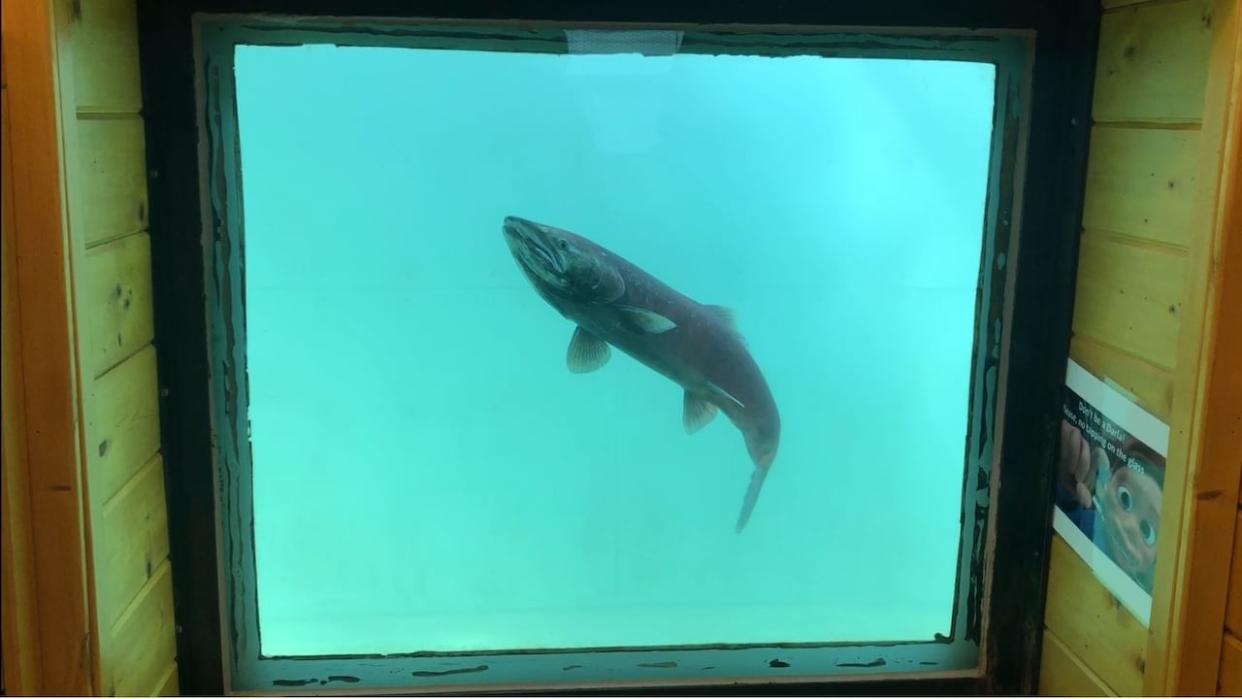Agreement on Yukon River chinook salmon called essential, but some still have questions

A new cross-border agreement on Yukon River chinook salmon explicitly states that hydroelectric dams and development are affecting the species — and, according to one expert, that will force more scrutiny of the Yukon government.
"Those are factors that really need to be addressed here in Yukon because there are no dams on the Yukon River in Alaska," Tim Gerberding, the chair of the Yukon Salmon Subcommittee, an advisory group.
Yukon Energy's hydroelectric dam in Whitehorse is currently going through the relicensing process. The company's proposal to renew the licence of another dam, in Mayo, is set to be made public this spring.
The seven-year agreement over chinook salmon, signed by the Canadian government and the State of Alaska earlier this week, sets a new conservation target of 71,000 Canadian-origin fish at the border. Over that period, the governments have agreed to, among other things, observe a moratorium on chinook fishing, reduce bycatch of the species, and restore in-river habitat.
Gerberding said when it comes to salmon habitat protection in the territory, there's a lot to be desired, in particular, how placer mining affects overwintering habitat.
Complicating things, he argues, is that the territory often tries to put the onus on Ottawa to protect salmon habitat. Gerberding says that's wrong, and that while the federal government is responsible for habitat in riparian zones — which can include streams, rivers, and wetlands — it's the Yukon government that has jurisdiction over territorial land, including that upslope from where the fish spawn.
"We're not going to be restoring chinook habitat here in Yukon unless the Yukon government buys in and accepts some responsibility for maintaining salmon habitat," he said.
In an email, a Yukon government cabinet spokesperson said the territory will look into how it can "potentially support" the implementation of the new agreement.
"We remain committed to working with Yukon First Nations and all stakeholders to address challenges and advocate for sustainable practices to safeguard salmon," wrote spokesperson Laura Seeley.
Agreement must not infringe on harvesting rights, Yukon chief says
Nicole Tom, the chief of the Little Salmon Carmacks First Nation in the Yukon, said when part of the natural world is suffering, citizens know to leave it alone. That makes the agreement on chinook good, she said.
"Traditional knowledge and traditional law has all of the solutions for what's happening. You don't mess with the fish."
Still, Tom has questions.
"I think what needs to be made clear is that this in no way infringes on [Little Salmon Carmacks citizens'] harvesting rights and the self-government agreements," she said.
Steve Gotch, senior director with Fisheries and Oceans Canada in the Yukon, said because the international accord seeks to help the recovery of Yukon River chinook, it aligns with Yukon First Nations' final agreements.
"Over the coming months, the Government of Canada will obviously be meeting with each of the Yukon First Nations to talk about what implementation looks like to each First Nation," he said.
There could still be limited harvest of chinook for ceremonial purposes, the agreement states, but that depends on the health of the run in a given year. If more than 71,000 fish are projected to reach Canada, the governments "may consider providing limited subsistence fishing opportunity," it reads.
Gotch said when it comes to harvesting chinook, this is the only flexibility the agreement affords — and even then, it's not guaranteed.
Last year, roughly 15,000 fish crossed the border into Canada, far below the conservation target of at least 42,500 chinook.
According to a 2022 report from the department, 10,000 chinook are needed to meet First Nations subsistence needs. To also meet escapement goals, the run would need to exceed 141,000 salmon.
Gotch said it'll take years before that's the case.
"There just aren't enough fish to be able to accommodate those needs, those constitutionally protected rights," he said.
"It just emphasizes the dire reality, I guess, and seriousness of the situation."
Agreement not a panacea
Sebastian Jones, with the Yukon Conservation Society, said the agreement is essential to salmon recovery because it concurrently guarantees chinook won't be killed by, for instance, commercial fisheries and ensures consensus between the two jurisdictions.
Still, he said the agreement isn't a cure-all.
"What happens in the Yukon River isn't the only thing that affects Yukon River salmon. Salmon spend most of their lives out in the sea, and so what happens in the sea is at least as important as what happens in the Yukon River," Jones said.
Jones referred to a 2022 United Nations biodiversity framework that, in part, commits to conserve 30 per cent of land and water by the end of the decade. If the Bering Sea secured that level of protection, chinook would greatly benefit, he said.
"That's the sort of thing that needs to happen. That's big thinking and we're a long way from that."

